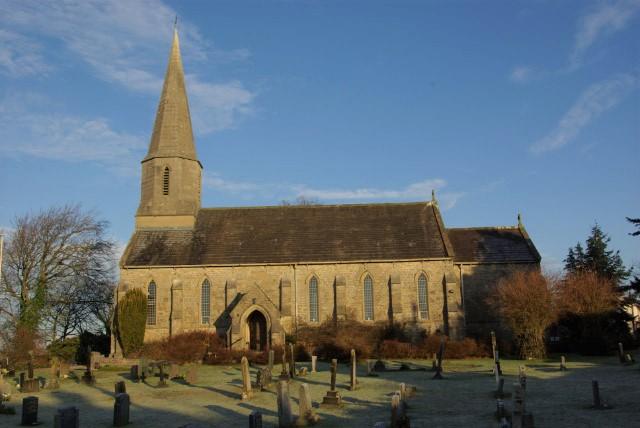St Peter
Heversham, Cumbria
Welcome to St Peter’s, the oldest site of worship in the old county of Westmorland and the building we see today reflects its long and fascinating history.

A local landmark, the church is set on the end of a limestone ridge at the gateway to the Lake District National Park with beautiful views across the Kent Estuary to Morecambe Bay.
Levens, Cumbria
Designed by William Coulthard of Lancaster, opened in 1828, it is a good example of a transition church between restrained classical Georgian architecture and full blown Gothic revival.
St John’s story is inextricably linked to the story of Levens Hall. Three local hamlets, Beathwaite Green, Cotes and Causeway End were in the Parish of Heversham. It is said that The Hon. Mary Howard, heiress of Levens Hall, had a disagreement with the vicar of Heversham and decided to endow and build a Chapel of Ease at Beathwaite Green. The slightly elevated site, spire and overall profile make this a distinctive church, more than a simple chapel of ease, it nevertheless (or perhaps to prove the point) asserts its presence. Opened in 1828, it was consecrated by John Bird, Bishop of Chester, in 1836. The dedication read ‘St John the Evangelist, Levens’, early indication of the use of this new name encompassing all three hamlets of Beathwaite Green, Cotes and Causeway End.
The Revd Sidney Swann (1912-14), made several changes to the interior, but the most significant occurred outside. The chapel having been built on a limestone scar offered insufficient soil depth for burials. His autobiography states:
‘I persuaded the Levens farmers to give me a boon carting day: they carried 200 cartloads of sand up… and soon the churchyard was green and ready for burials… but the difficulty was to get the first burial. A bribe of a sovereign, however got a corpse, and once there was a gravestone there, others soon came along, for it was no longer thought to be lonely’.
In 1920 Swann married Theodosia, widow of Captain Josceline Bagot of Levens Hall. The fine stained glass east window, by AK Nicholson, was given in memory of her late husband and son. The north and south stained glass is by N & S Abbot and Co Lancaster. Many of the oak furnishings, choir stalls and priests desks were donated by the Bagot family, the vicar’s desk bears the Bagot coat of arms.
The colourful vicar Reverend Sidney Swann (1862-1941) made some internal changes around 1913 and built the Japanese style framework which houses bells which came from St Thomas’ Milnthorpe.
The church is a place of welcome and sanctuary to anyone who steps across the threshold. It is a beacon of God’s love for the world and his people and particularly for all the important life events of people in the village community, whether or not they are regular members of the worshipping community. Many people use our building and grounds as a place of peace and tranquility for private reflection in good times and bad.
The congregation wants to be an example of sustainable living within our community. We were the first Gold Award Eco Church in the country and run a number of events open to the whole community : Nature Watch /Recycling for Good Causes / ongoing recycling collections. We host public community services like Remembrance / Mothering Sunday / Harvest (very important in a farming community) / Carol Service / Jubilee service / coronation service for the whole village community, but have equally run a number of farm services and environmentally themed services. We are a collection point in the village for the local Food Bank. Whenever there is a DEC Appeal following a disaster we hold a village collection event so that local people can donate easily. We run Open the Book in our village school, Messy Church and have staged all the 'experience' events both for school and the local community. Working with the Methodist church in the village and our Catholic friends who worship in the next village, our church community was instrumental in the setting up of 'Levens Good Neighbours', a support group within the village. We have run regular Open Gardens events with a sustainability theme and lychgate plant sales at other times.

Heversham, Cumbria
Welcome to St Peter’s, the oldest site of worship in the old county of Westmorland and the building we see today reflects its long and fascinating history.
Helsington, Cumbria
Built in 1726, the church commands extensive views across the Lyth valley towards the distant Lakeland fells and Morecambe Bay.
Beetham, Cumbria
The beautiful Grade I church we see today, situated by the River Bela, is the result of additions and adaptations through the centuries.